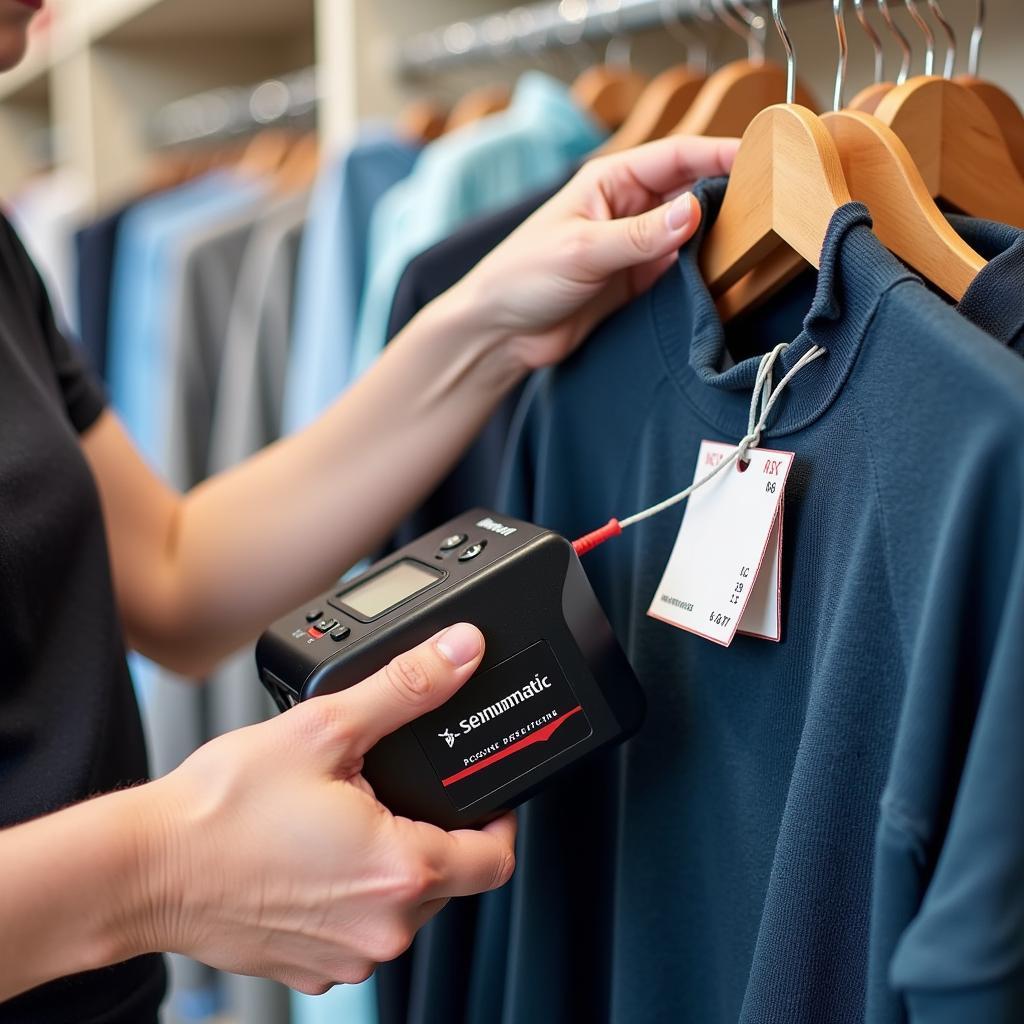Dealing with a malfunctioning Sensormatic anti-theft system can be incredibly frustrating. Whether you’re a retailer struggling with a faulty system or a customer who accidentally triggered the alarm after leaving the store, understanding how to turn off or deactivate a Sensormatic system is crucial. This article explores various methods for disabling these systems, emphasizing safety, legal compliance, and troubleshooting common issues.
Understanding Sensormatic Anti-Theft Systems
Sensormatic is a leading provider of retail loss prevention solutions, and their anti-theft systems are widely used in stores worldwide. These systems typically involve electronic article surveillance (EAS) tags attached to merchandise and detectors placed at store exits. When an active tag passes through the detector field, an alarm is triggered. There are different types of Sensormatic systems, including acousto-magnetic (AM), radio frequency (RF), and microwave. Understanding the specific type of system in place is essential for effectively disabling it.
How to Deactivate a Sensormatic System in a Retail Setting
Deactivating a Sensormatic system requires specific tools and authorization. Only authorized personnel, typically store managers or loss prevention staff, should perform this task. The primary method for deactivating tags involves using a detacher or deactivator unit designed for the specific EAS technology employed. These devices generate a magnetic or radio frequency signal that neutralizes the tag, allowing it to pass through the detectors without triggering the alarm.
 Sensormatic Deactivator Unit in Action
Sensormatic Deactivator Unit in Action
For AM systems, a detacher is used to remove hard tags. For RF systems, a deactivator pad is typically employed to deactivate adhesive labels. It’s important to use the correct device for the corresponding tag type to prevent damage to merchandise or the system itself. Mishandling the equipment can also lead to system malfunctions.
Troubleshooting Common Sensormatic System Issues
Sensormatic systems, like any electronic device, can experience malfunctions. Common issues include false alarms, continuous beeping, and system failure. If you’re experiencing these problems, here are some troubleshooting steps:
- Check the power supply: Ensure the system is receiving power and all connections are secure.
- Inspect the detectors: Look for any obstructions or damage to the detector antennas or pedestals.
- Verify tag deactivation: Ensure tags are being properly deactivated at the point of sale.
- Test the system: Use a test tag to confirm the system is functioning correctly.
 Troubleshooting a Sensormatic System
Troubleshooting a Sensormatic System
If these steps don’t resolve the issue, contact Sensormatic customer support for professional assistance. Attempting to repair the system yourself without proper training can void warranties and potentially cause further damage.
What to Do if the Alarm Triggers After Leaving the Store
Occasionally, a tag may not be deactivated properly, triggering the alarm after you leave the store. If this happens, calmly return to the store with your receipt and the item. Explain the situation to the staff, and they will be able to deactivate the tag and resolve the issue.
“It’s essential to remain calm and cooperative in this situation,” says John Smith, Senior Loss Prevention Consultant at Retail Security Solutions. “Most retailers understand that these issues can happen and are happy to assist customers in resolving them.”
How to Turn Off a Sensormatic System for Maintenance or Testing
Turning off the entire Sensormatic system for maintenance or testing should only be done by trained personnel. This usually involves accessing the system control panel and following specific shutdown procedures outlined in the user manual. Improper shutdown can damage the system or corrupt its settings.
“Regular maintenance is vital for ensuring the optimal performance and longevity of your Sensormatic system,” advises Maria Garcia, Lead Technician at SecureTech Solutions. “Following the manufacturer’s guidelines for shutdown and maintenance is crucial.”
Conclusion
Understanding how to turn off or deactivate a Sensormatic anti-theft system involves knowing the specific system type, using the correct tools, and following proper procedures. Whether you’re a retailer or a customer, following the guidelines outlined in this article can help you effectively manage and troubleshoot Sensormatic systems while maintaining safety and legal compliance. Remember, tampering with the system without authorization is illegal and can have serious consequences.
FAQ
- Can I deactivate a Sensormatic tag at home? No, you should not attempt to deactivate a Sensormatic tag at home. Return to the store with your receipt for assistance.
- What should I do if the alarm keeps going off even after the tag is removed? Contact Sensormatic customer support or a qualified technician to troubleshoot the issue.
- Are there different types of Sensormatic tags? Yes, Sensormatic offers various tag types, including hard tags, adhesive labels, and spider wraps, each designed for different types of merchandise.
- How often should a Sensormatic system be maintained? Regular maintenance, as recommended by the manufacturer, is crucial for optimal performance. This usually involves periodic inspections and testing.
- Can I buy a Sensormatic detacher online? Purchasing and using a Sensormatic detacher without proper authorization is illegal and not recommended.
- What is the difference between a detacher and a deactivator? A detacher is used to remove hard tags, while a deactivator is used to deactivate adhesive labels or soft tags.
- Who should I contact for Sensormatic system repairs? Contact Sensormatic customer support or a certified technician for professional repair services.
